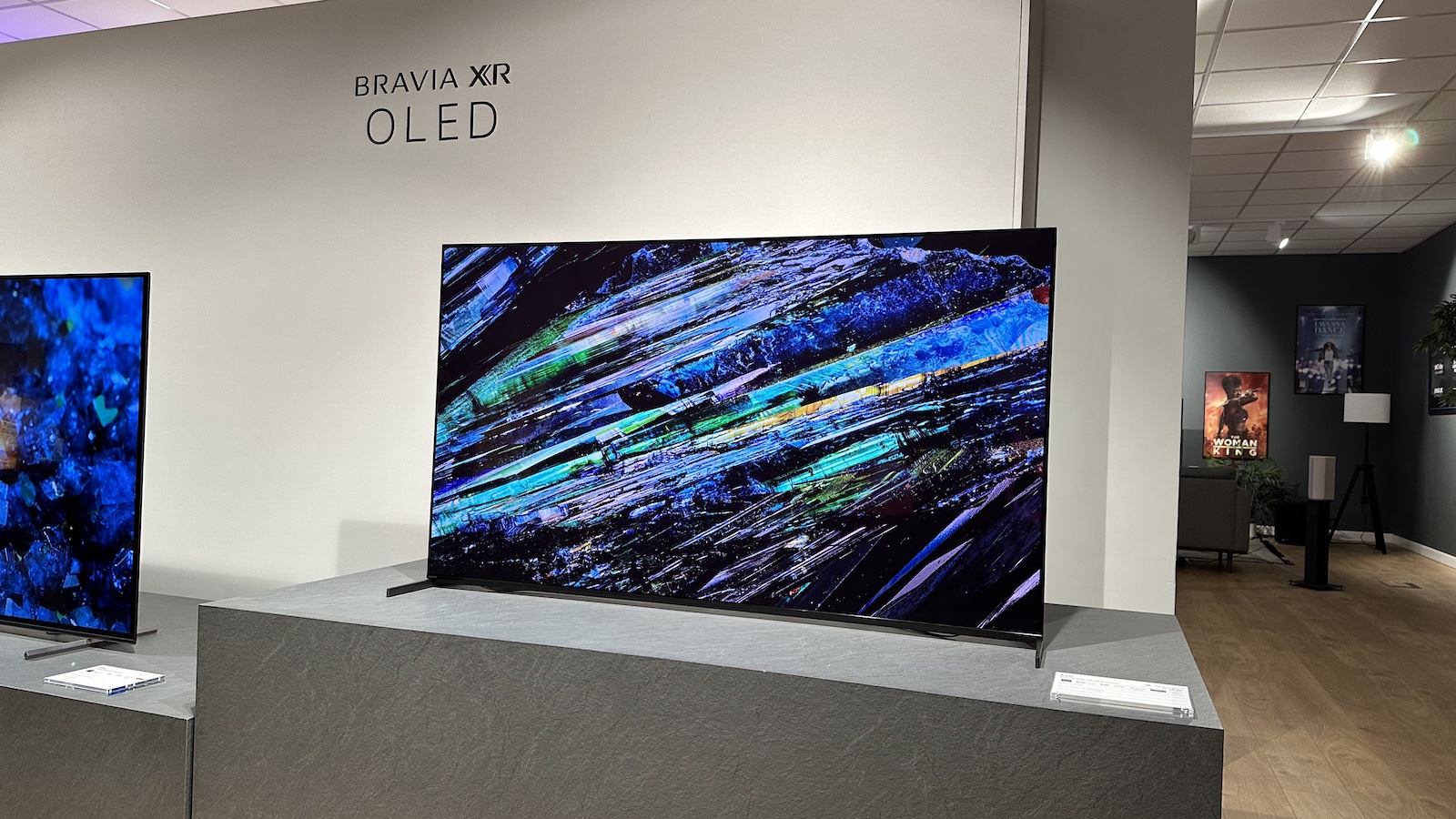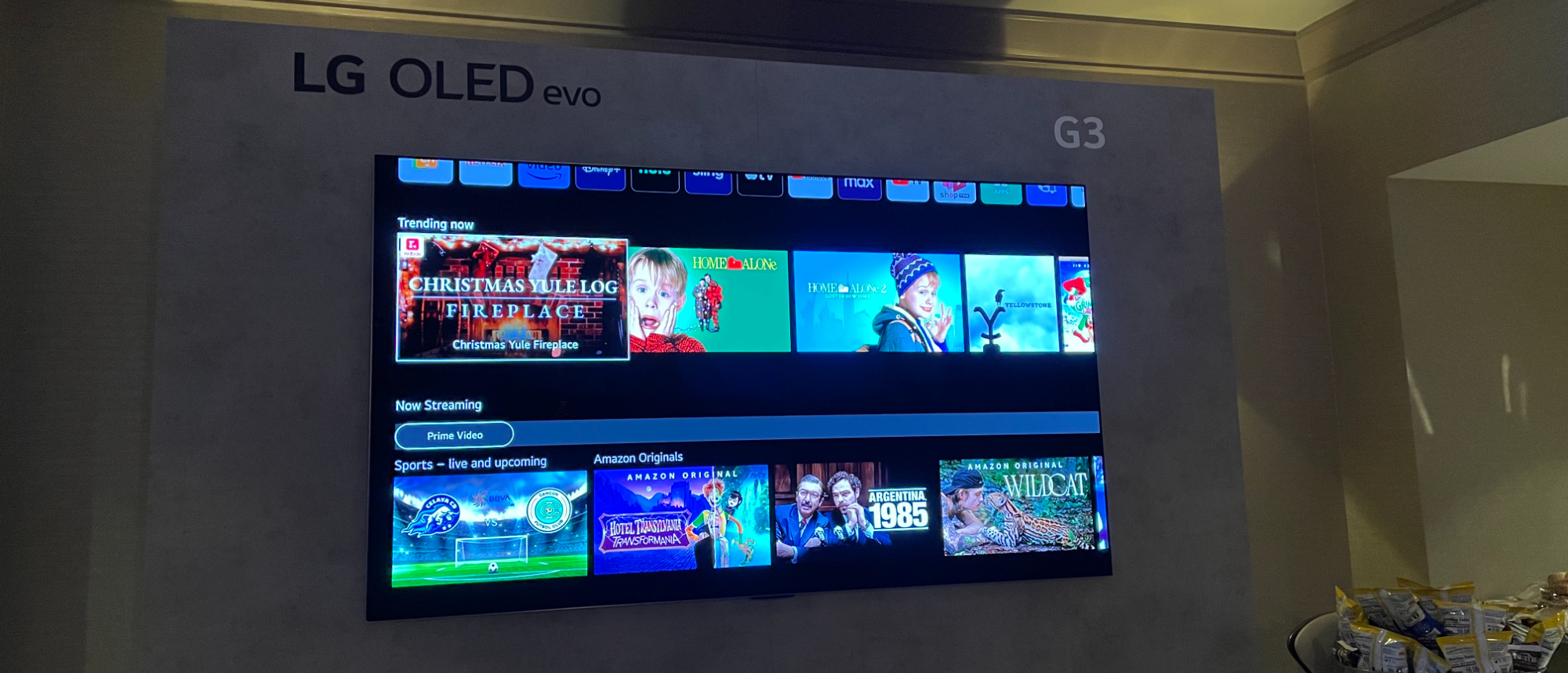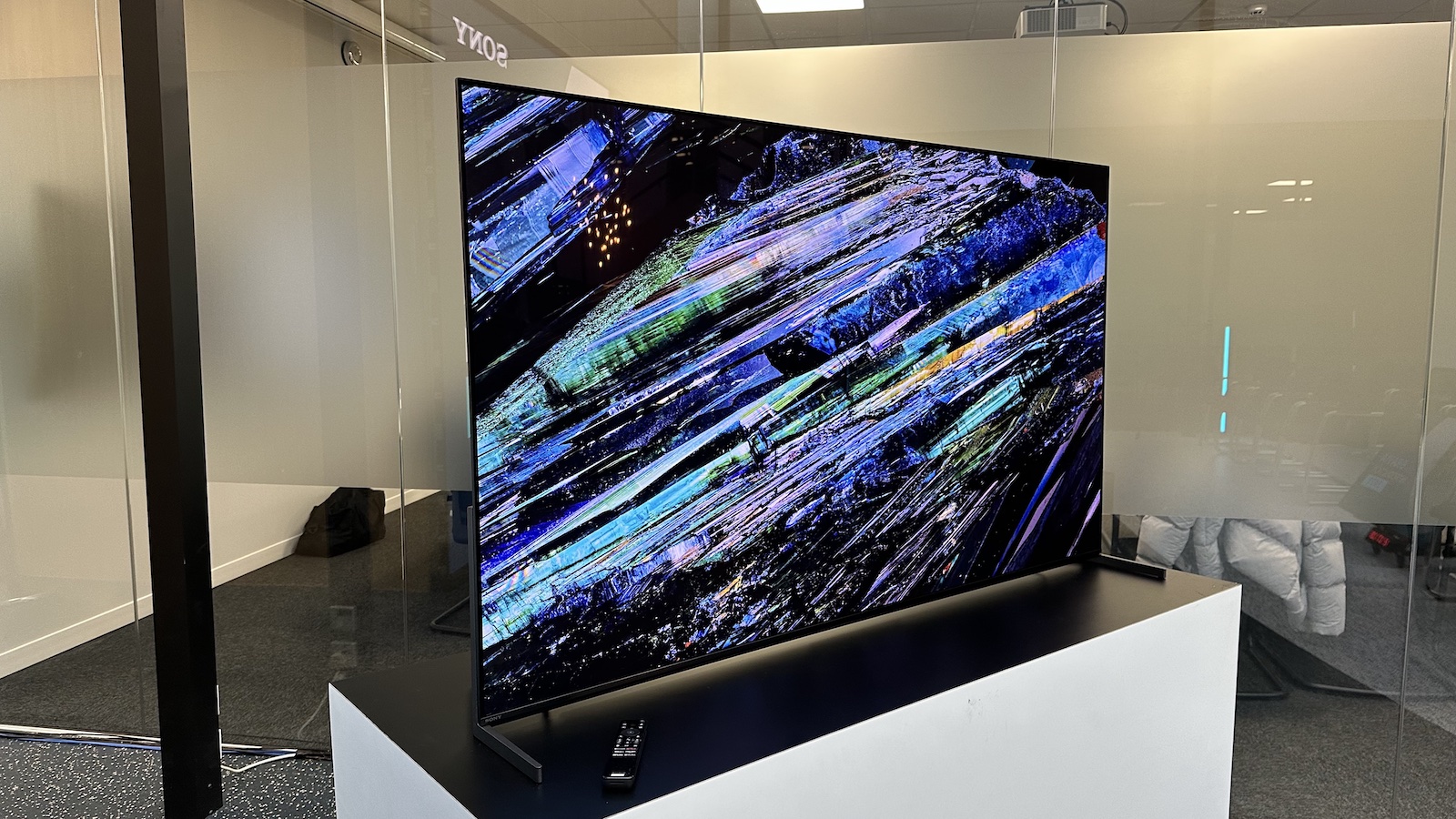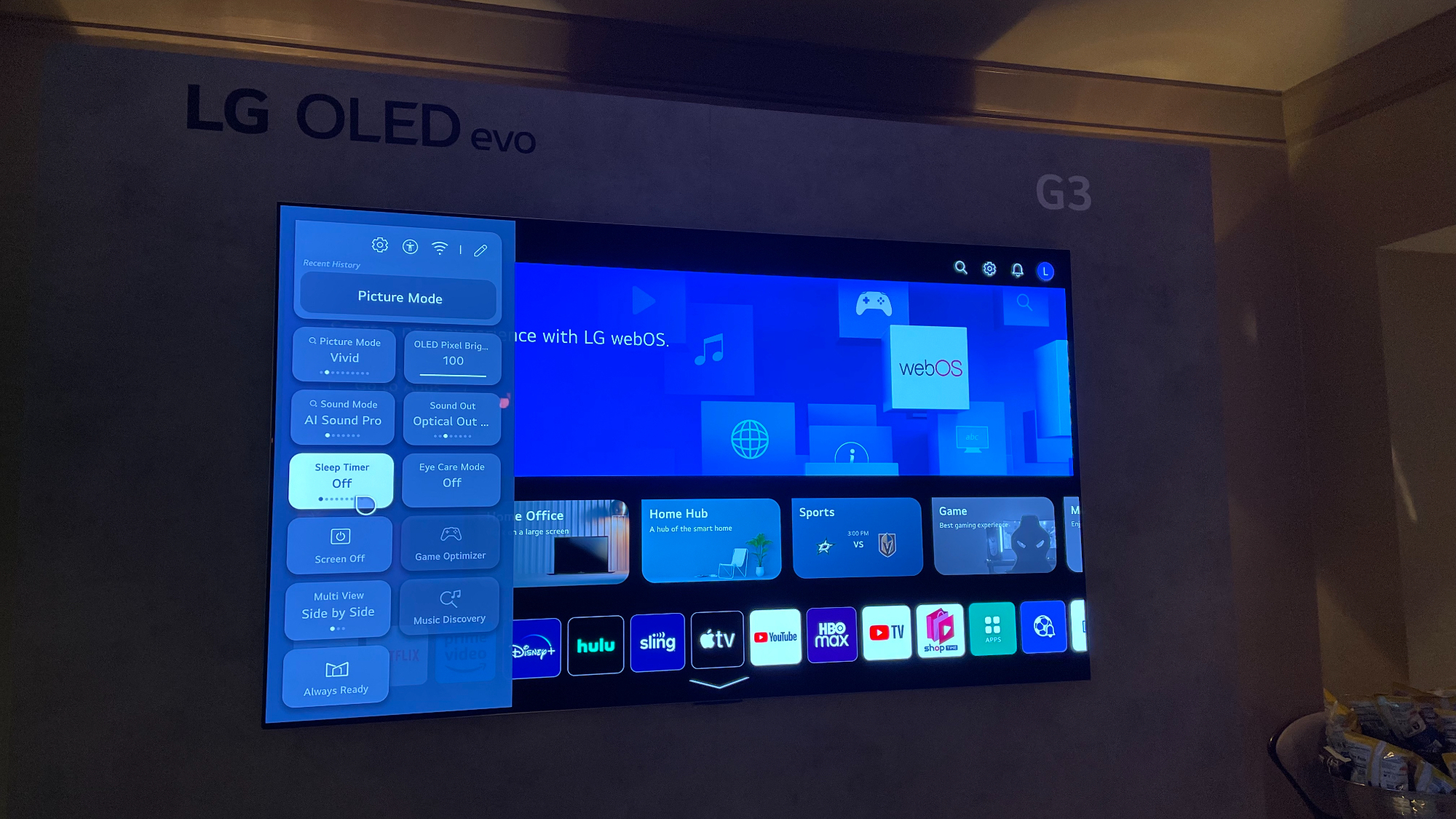
2022 was nothing short of a revolutionary year for OLED TVs. LG's G2 OLED TV hit new heights when it came to brightness and wowed us with its overall pixel-perfect performance as we dubbed it to be the company's "finest OLED yet." It wasn't without its flaws, however, as it was certainly pricey, and it still didn't quite reach the brightness levels of high-end LCD models.
In the Sony camp, we saw the A95K make its debut, with its gloriously authentic image and impressive sound (by TV speaker standards). It immediately caught our eye thanks to its new OLED technology dubbed QD-OLED. This Samsung-derived screen technology incorporates a Quantum Dot layer into the traditional OLED construction, helping to boost colour vibrancy and the brightness above the standards set by traditional OLED TVs.
Both the LG G2 and Sony A95K were knockout performers last year, but in 2023 we have their respective successors ready and waiting to revolutionise OLED TVs once again.
The Sony A95L has been officially unveiled and boasts a second-generation QD-OLED panel that allows it to apparently hit a peak brightness figure of over 2000 nits in its brightest HDR mode.
LG, on the other hand, has decided to take a new approach with the G3 OLED, with its own super-bright OLED panel. This one uses brand new Micro-Lens-Array (MLA for short) technology, which features a layer of billions of microscopic lenses designed to channel the light produced by the OLEDs towards the user in order to improve peak brightness.
The real question is, which one is better? Right now, it's too early to tell, as we haven't yet had samples into our test labs for comprehensive, comparative testing. However, we have seen both sets in action and can use those hands-on experiences – along with a deep dive into the specs and our in-depth knowledge of their predecessors – to form some early opinions on how this battle of the next-gen OLED TVs might shape up.
LG G3 vs Sony A95L: price

The G3 and A95L are the flagship 4K OLED TVs of their respective brands, and prices will reflect that.
Of the two, we only have pricing for the LG G3, and even then only for the US. That pricing is as follows:
- 55-inch (OLED55G3): $2500 (around £2050 / AU$3730)
- 65-inch (OLED65G3): $3300 (around £2710 / AU$4930)
- 77-inch (OLED77G3): $4500 (around £3700 / AU$6720)
- 83-inch (OLED83G3): $6500 (around £5340 / AU$9710)
These aren't the confirmed UK and Australian prices and instead represent how much the G3 would cost if the US prices were converted directly. Unfortunately, that's not how these things usually work, so the non-US prices should be taken with fairly heavy pinch of salt.
What's more useful is to look at how the US prices for this year's G3 compare with the US prices for last year's G2, and it's not great news there: the 55-inch and 65-inch versions of the G3 are $300 more expensive than their G2 equivalents were at launch, and the 77-inch G3 is $500 more than its predecessor was originally. There's been no price increase for the 83-inch model – that's almost certainly because it doesn't feature the new MLA technology that's present throughout the rest of the range.
Sony, meanwhile, hasn't let anything slip in terms of A95L pricing, but last year's A95K was significantly more expensive than the LG G2 and we don't expect the new model to be priced lower. Assuming the A95L is priced identically to the A95K, it will still be more expensive than the LG G3.
LG G3 vs Sony A95L: build

LG is using what looks to be a mostly recycled design from last year's G2 for the G3. This includes a wall-mount-centric design with no traditional stand in the box. Instead, you get LG's "Zero Gap Wall Mount", which appears to be a rebranded version of the same sleek wall mount we saw on last year's model. As the name suggests, the goal with the LG is to make it appear as flush with the wall as possible. The G3 is also made of the same composite fibre material as its predecessor, making it sturdy yet light and manoeuvrable – ideal for making the wall mounting process as painless as possible.
Sony is changing things up slightly with the A95L, with a new stand that's simpler and lighter than last year's admittedly attractive but super-heavy and awkward-to-put-together design. This year, the A95L comes with a pair of metal feet that sit at either end of the display, although the 77-inch variant gets an option third one for the middle. These stands can also be set to soundbar mode, which lifts the TV up a few inches to accommodate a soundbar sitting underneath without blocking the screen.
LG G3 vs Sony A95L: features

As expected, both of these TVs are feature-packed as they represent the highest-end offerings from the respective Korean and Japanese tech giants. Both feature 4K resolutions with HDR support, the latter in the HDR10, HLG and Dolby Vision formats – neither brand will be adding HDR10+ support to its roster of TVs in 2023. This isn't a great loss as Dolby Vision is the dominant format when it comes to both physical discs and streaming.
Onto the gaming capabilities of these sets and either would make an admirable companion for your PS5, Xbox Series X or PC. The G3 and A95L both feature 120Hz panels for smoother and more responsive gameplay, and both can handle proper 4K/120Hz gaming signals.
However, there is one glaring gaming omission on the Sony that makes the LG the more enticing choice for serious gamers, and that's all to do with the HDMI 2.1 ports. LG offers four, fully-featured HDMI 2.1 ports, one of which also handles eARC. That means even with a soundbar or AV receiver plugged in, you'll still be able to plug a PS5, Xbox Series X and a PC in and still be able to take advantage of the most advanced features of each.
The Sony, on the other hand, only offers two HDMI 2.1 sockets, one of which is also used for eARC. This is due to Sony using the MediaTek Pentonic 1000 chip for its new flagship model, and it means that if you need to use eARC for a soundbar or AVR, you'll have just one top-notch socket left for a console or gaming PC. Any sources beyond that will have to make do with an HDMI 2.0 socket that can handle 4K/60Hz at best.
Moving away from gaming and onto software, LG is debuting a new version of its webOS operating system on the G3. This latest software is centred around cleaning up the existing webOS 2022 version, as well as making it easier to navigate. LG is implementing a card-based system that gives you easy access to your favourite streaming apps, settings and input sources, which should hopefully negate some of the issues found in the previous generation OS.
Sony is sticking with Google TV, which is a universal system used on many TVs and even Google's own Chromecast devices. It wasn't broken on the A95K so there's no point fixing it, and thanks to its easy-to-navigate UI and wide app compatibility, we see no reason for Sony to shift away from Google TV.
LG G3 vs Sony A95L: picture

While neither of these TVs has undergone our rigorous testing process quite yet, we've seen both models in the flesh so we have some idea as to how they perform in the picture department. We know that both models offer brightness well above the capabilities of their standard OLED counterparts.
Both TVs are expected to be capable of a brightness figure around the 2000 nits mark, which for an OLED was unheard of until now. Even the LG G2 and A95K, which boasted improvements in the brightness department last year, hang around the 1000 nits mark, so potentially doubling this figure could be revolutionary. If we were to remain cautiously optimistic, we actually expect the TVs to target around 1500 nits in their most accurate and cinematically authentic picture modes, with the upper figure reserved for the most vivid presets. Either way, though, it's still a huge leap in terms of raw capability.
From our experience, we could see an improvement when it comes to brightness on the G3, stating in our hands-on review that the new LG takes "brightness up a level". Of course, we know that the G3 will offer a crisp and detailed picture if it performs anything like its G2 predecessor.
We managed to get a bit more of an extended demo with a pre-production unit of the A95L, and it dazzled with its enhanced brightness and more dynamic image. Even with the extra nits under its belt, the A95L didn't look overcooked or overtly bright in our initial hands-on, although the preset on the TV during this demo did leave blues looking a bit cool. That being said, the extra punch and dynamism resulted in a crisp, lifelike image with impressive three-dimensional depth, and left us counting down the days until we could get it into our labs for further testing.
LG G3 vs Sony A95L: early verdict

It's shaping up to be a monumental year for OLED TVs, and the two sets here are among the favourites to come out on top. The LG G3 and Sony A95K are both building upon the success of their respective predecessors with new, brighter panel technology that will likely leave older OLED TVs in their dust.
That said, it is simply too early to call a winner right now, with neither model being commercially available at the time of writing. You can expect full reviews of both models very soon, though, and further updates to this head-to-head once we've put each one through our comprehensive, comparative set of tests.
MORE:
Read our Sony A95L hands-on review
As well as our LG G3 and C3 OLED hands-on review from CES 2023
Or check out the best TVs available right now







